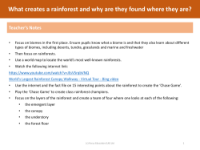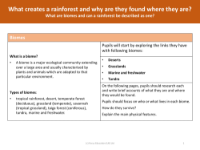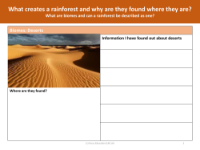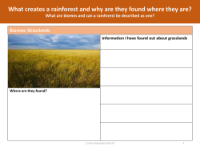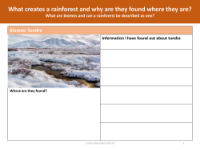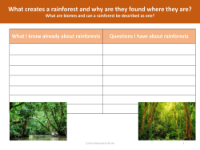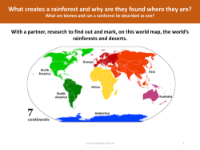What are biomes and can a rainforest be described as one? - Presentation
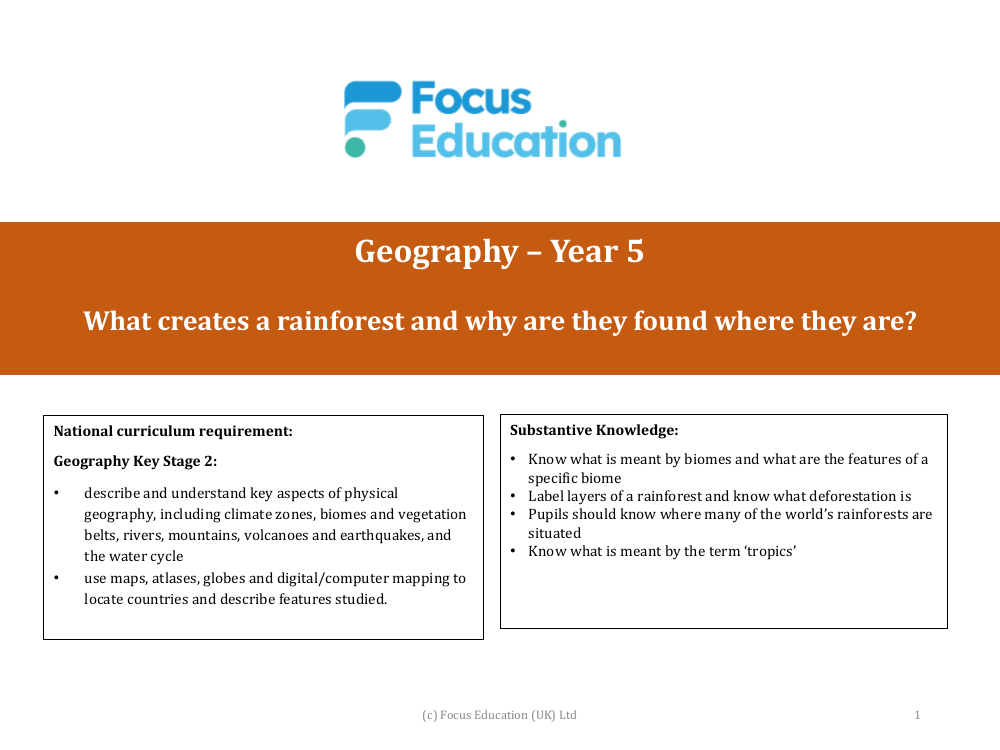
Geography Resource Description
Biomes are large ecological areas on the Earth's surface, with fauna and flora adapting to their environment. They are characterised by distinct biological communities that have developed due to shared physical climates. Examples of biomes include tropical rainforests, deserts, grasslands, and tundra, as well as marine and freshwater environments. The term 'rainforest' can indeed be used to describe a type of biome. Rainforests are dense, warm, wet forests and are known for their high biodiversity, containing a vast array of plant and animal species. They are typically found in the tropics, near the Equator, where the climate provides consistent warmth and moisture that supports the lush and diverse ecosystems found within them.
The importance of rainforests extends beyond their biodiversity; they are crucial for the global climate and human well-being. Rainforests play a vital role in the Earth's water cycle, help regulate temperatures, and absorb significant amounts of carbon dioxide. Deforestation poses a significant threat to these environments, leading to habitat loss for countless species and contributing to climate change. Understanding the structure of rainforests, including the emergent layer, canopy, understory, and forest floor, is essential for grasping their complexity and the interdependence of the life forms that inhabit them. Geographical education at Key Stage 2 in the UK curriculum encourages students to explore the physical aspects of our world, including biomes like rainforests, and to use tools such as maps and digital resources to locate and study them in depth.
